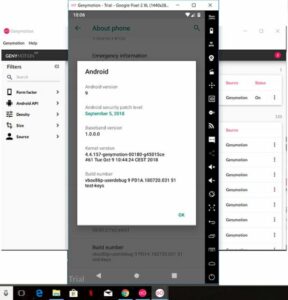

By the mid-1990s, however, contemporary operating systems such as Windows NT, OS/2, NeXTSTEP, BSD, and Linux had all brought pre-emptive multitasking, protected memory, access controls, and multi-user capabilities to desktop computers. With the introduction of System 5, a cooperative multitasking extension called MultiFinder was added, which allowed content in windows of each program to remain in a layered view over the desktop, and was later integrated into System 7 as part of the operating system along with support for virtual memory. With the Switcher, the now familiar Clipboard feature allowed copy and paste between the loaded programs across switches including the desktop.
ANDY OSMAC SOFTWARE
The software of each loaded program used the memory exclusively only when activated by the Switcher did the program appear, even the Finder's desktop. With the Macintosh 512K, a system extension called the Switcher was developed to use this additional memory to allow multiple programs to remain loaded. Initial versions of the System Software ran one application at a time.
ANDY OSMAC MAC OS
The last major release of the system was Mac OS 9 in 1999. That program ended after the release of Mac OS 8 in 1997.

Apple rebranded the system as Mac OS in 1996, starting officially with version 7.6, due in part to its Macintosh clone program. The name Macintosh System Software came into use in 1987 with System 5. This operating system consisted of the Macintosh Toolbox ROM and the "System Folder", a set of files that were loaded from disk. As part of an agreement allowing Xerox to buy shares in Apple at a favorable price, it also used concepts from the Xerox PARC Alto computer, which former Apple CEO Steve Jobs and other Lisa team members had previewed. The first version of the system software, which had no official name, was partially based on the Lisa OS, which Apple previously released for the Lisa computer in 1983. It was included with every Macintosh that was sold during the era in which it was developed, and many updates to the system software were done in conjunction with the introduction of new Macintosh systems.Īpple released the original Macintosh on January 24, 1984. The Macintosh operating system is credited with having popularized the graphical user interface concept.
ANDY OSMAC SERIES
Gaia 1X: 15.60 fps 2X: 11.50 fps 4X: 09.43 fpsĤX Slowmo Apollo: 41.59 fps APFast: 154.06 fps Chronos: 18.86 fps CHFast: 26.Mac OS (originally System Software retronym: Classic Mac OS ) is the series of operating systems developed for the Macintosh family of personal computers by Apple Computer from 1984 to 2001, starting with System 1 and ending with Mac OS 9. Why would speed increase for SD in this case?!?Īrtemis 1X: 08.07 fps 2X: 05.63 fps 4X: 02.38 fps Mac Studio M2 Max, benchmarks upthread were with Max memory set to 100%. If we were allowed to reduce the memory below 0.1 then perhaps 640x480 might be faster than 720x480? Also, for SD upscaling on Apple Silicon, we are still getting significantly faster processing by minimizing the memory.

Note that 720x480 is consistently faster than 640x480.


 0 kommentar(er)
0 kommentar(er)
